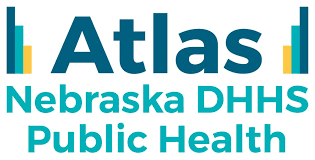Table of Contents
Introduction
In the era of digital transformation, health data plays a crucial role in decision-making, research, and public health policies. A Atlas is a comprehensive tool that visualizes health data geographically and demographically, helping professionals and researchers gain valuable insights. This article answers frequently asked questions about Health Atlas, its significance, functionality, and benefits.
1. What is the Health Atlas?
A Health Atlas is a digital or physical compilation of health-related data presented geographically. It provides visual representations such as maps, graphs, and statistical charts to display health trends across different regions.
2. What is the Purpose of the Atlas?
the Health Atlas serves multiple purposes, including:
Monitoring disease outbreaks
Identifying healthcare disparities
Supporting public health policies
Assisting in resource allocation
Enhancing epidemiological research
Improving healthcare accessibility and planning
3. How Does the Health Atlas Work?
The Health Atlas gathers health data from various sources such as government databases, healthcare institutions, and research centers. It then processes and presents this data through an interactive or static platform. Users can analyze:
Disease prevalence
Healthcare infrastructure
Socioeconomic factors affecting health
Environmental influences on health
4. What Data Sources Are Used in a Health Atlas?
The Health Atlas relies on multiple data sources, including:
World Health Organization (WHO)
Centers for Disease Control and Prevention (CDC)
National health agencies
Hospitals and clinics
Epidemiological studies
Census data
5. Who Uses the Health Atlas?
A Healtis utilized by various stakeholders, such as:
Public health officials
Medical researchers
Government policymakers
Healthcare providers
Epidemiologists
NGOs and humanitarian organizations
6. What Are the Benefits of Using a Health Atlas?
Improved Decision-Making
Atlases help policymakers allocate resources efficiently and respond to health crises effectively.
Enhanced Research and Analysis
Researchers can analyze health trends and factors influencing public health.
Increased Public Awareness
Visual data representations make complex health information more accessible to the general public.
Early Disease Detection
Mapping outbreaks aids in the early detection and control of diseases.
7. Are There Different Types of Health Atlases?
Yes, Health can be categorized based on their focus:
Epidemiological Atlases:
Focus on disease spread and outbreaks
Environmental Health :
Study environmental factors affecting health
Healthcare Access Atlases:
Analyze availability and distribution of healthcare services
Genetic Atlases health :
Explore genetic predispositions to diseases
8. What Technologies Are Used to Develop a Health Atlas?
A Health Atlas employs various technologies, such as:
Geographic Information Systems (GIS)
Data visualization tools
Artificial Intelligence (AI) for predictive analysis
Cloud computing for data storage
Machine learning algorithms for pattern detection
9. How Can a Health Atlas Help in Managing Pandemics?
During pandemics, a Health provides real-time data on infection rates, healthcare capacities, and containment measures. Authorities use it to:
Track and predict disease spread
Allocate medical resources effectively
Identify high-risk areas for targeted interventions
10. Can Individuals Access a Atlas?
Yes, many Health are publicly accessible through government websites, health organizations, and research institutions. However, some databases may require special access due to sensitive health information.
11.AreHealth Atlases Available Globally?
Yes, Atlases exist at local, national, and global levels. Examples include:
Global Health, Atlas (WHO) Worldwide health data
National Health Country specific health reports
Regional and Local Health Atlases Focused on smaller areas for detailed insights
12. How Accurate is the Data in a Health,Atlas?
The accuracy of a Health depends on the sources of its data. Reliable sources like government agencies and reputable health organizations ensure high-quality, up-to-date information. However, occasional discrepancies may occur due to reporting delays or data limitations.
13. Can Health Help in Predicting Future Health Trends?
Yes, Health, Atlases use AI and predictive modeling to estimate future health trends based on current and historical data. This assists in:
Forecasting disease outbreaks
Anticipating healthcare demands
Identifying potential risk factors
14. How Can Policymakers Use the Health,Atlas?
Policymakers use Health, Atlases to:
Plan public health initiatives
Allocate funding efficiently
Implement targeted healthcare programs
Address social determinants of health
15. Are There Any Challenges in Using a Health ?
Data Privacy Issues
Handling sensitive health information requires strict privacy regulation Data Inconsistency
Variations in data collection methods can affect accuracy.
Technical Barriers
Advanced analytics may require specialized training.
Funding and Maintenance
Sustaining a Health requires ongoing investment and updates.
16. How Can a Health Be Improved?
Integration with AI and Big Data
Advanced analytics enhance predictive capabilities.
Real Time Data Updates
Frequent updates ensure accuracy and relevance.
User Friendly Interfaces
Simplified platforms improve accessibility for all users.
Collaboration Between Stakeholders
Partnerships between governments, researchers, and tech companies enhance data quality and utilization.
Conclusion
A Health a powerful tool that plays a vital role in public health planning, research, and policy-making. By offering geographic health insights, it helps decision-makers address health disparities, predict future trends, and enhance healthcare accessibility. As technology advances, Health will continue to evolve, making healthcare data more precise, accessible, and impactful.



